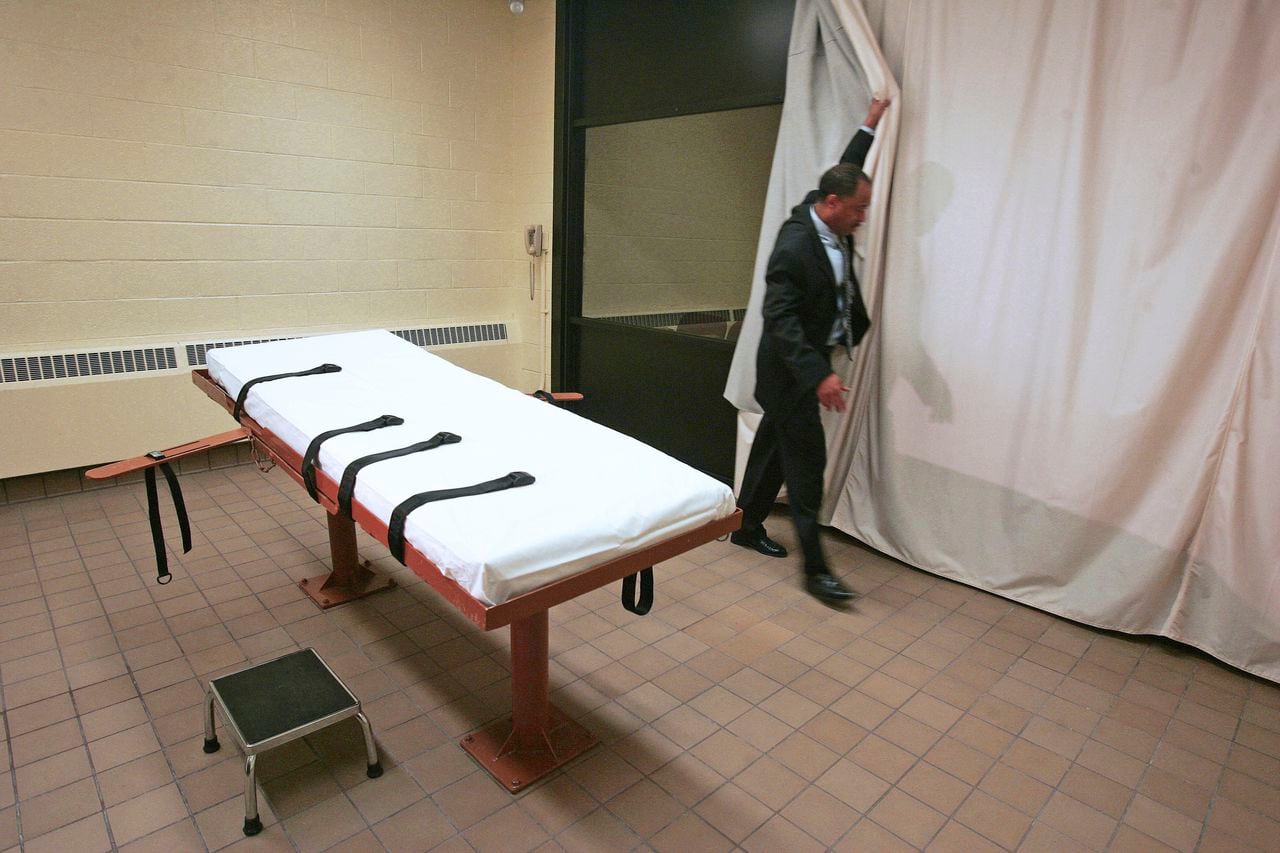Ohio may follow Alabama in nitrogen gas executions: Inmates are âdying of old age,â AG says
Ohio lawmakers are preparing legislation that would allow executions using nitrogen gas as a way to resolve the state’s years-long problems with obtaining lethal-injection drugs.
The Republican-sponsored legislation, which a co-sponsor says will be introduced in the next few days, comes after Alabama carried out the nation’s first execution using nitrogen gas last week.
The proposed Ohio bill would allow the use of pure nitrogen gas, which causes death via asphyxiation, as a backup method for executions if lethal-injection drugs aren’t available, according to state Rep. Josh Williams, a Toledo-area Republican who has signed on as a co-sponsor of the bill.
The legislation would also restate that manufacturers of lethal-injection drugs have legal immunity when such drugs are used in Ohio executions, Williams said.
Besides Alabama, two other states — Mississippi and Oklahoma — have authorized executions using nitrogen gas, and several other states are considering such a move, according to the Associated Press.
Ohio hasn’t carried out an execution since 2018, as state officials have struggled to obtain lethal-injection drugs from U.S. and European pharmaceutical companies, which have cut off sales on moral and legal grounds.
Gov. Mike DeWine, since taking office the following year, has refused to let any executions go forward, repeatedly expressed his concern that if drug companies find that Ohio used its drugs to put people to death, they will refuse to sell the state any of its drugs – not just the ones used in executions. That, he said, would endanger the ability of thousands of Ohioans – including Medicaid recipients, state troopers and prison inmates – to get drugs through state programs.
DeWine said he would only allow executions to go forward if state lawmakers pass legislation authorizing an alternative to lethal injection. Until now, though, legislators have shown little interest in taking such action, though efforts to abolish the state’s death penalty have also gone nowhere.
Ohio currently has 118 inmates on death row.
DeWine spokesman Dan Tierney, in a statement, said the governor’s office hasn’t yet seen the proposed legislation.
“The governor has not generally commented on death-penalty legislation,” Tierney stated, noting that while state lawmakers have introduced several death-penalty bills in the past, none have moved through the Ohio General Assembly so far.
Williams said the hope is that authorizing executions using nitrogen gas would resolve those concerns. He noted that a federal court ruled prior to Alabama’s execution of Kenneth Eugene Smith last Friday that using nitrogen gas wouldn’t violate the U.S. Constitution’s guarantee against cruel and unusual punishment.
“Now that we’ve had other states litigate this issue, I think it’s time that we move forward looking for alternative means,” Williams said.
Cleveland.com/The Plain Dealer has reached out to the primary co-sponsors of the proposed bill, Republican state Reps. Brian Stewart of Pickaway County and Phil Plummer of Montgomery County, for comment.
After Smith was put to death, Ohio Attorney General Dave Yost indicated he supports the use of nitrogen gas for Ohio executions. “Perhaps nitrogen—widely available and easy to manufacture—can break the impasse of unavailability of drugs for lethal injection,” Yost, a Columbus Republican, posted on X. “Death row inmates are in greater danger of dying of old age than their sentence.”
Yost, along with Stewart, Plummer and Lou Tobin of the Ohio Prosecuting Attorneys Association, have called a news conference on Tuesday morning to discuss the upcoming legislation authorizing executions with nitrogen gas.
The prosecuting attorneys association has, for years, been a vocal advocate of allowing nitrogen gas as a way to resume executions in Ohio.
“We’re interested in finding a path to justice for the victims of these crimes,” Tobin said Monday in an interview. “And that means finding a way to resume executions in Ohio.”
Death-penalty critics have said that using nitrogen gas is inhumane and experimental, noting that Smith appeared to remain conscious for several minutes after the gas was turned on, then appeared to shake, convulse and pull against his restraints.
Allison Cohen, executive director of Ohioans to Stop Executions, predicted in an interview that an Ohio execution carried out via nitrogen gas will go wrong. “Even when they have the best of intentions, humans still make mistakes, and executions in Ohio have gone wrong in the past,” she said.
Cohen also said she doesn’t think this latest attempt to revive executions in Ohio will pass the legislature, given opposition to the death penalty both from within the Ohio Statehouse and among the state’s population overall.
“This piece of legislation is wildly out of step with the way that Ohioans feel about executions,” she said.
Jeremy Pelzer covers state politics and policy for Cleveland.com and The Plain Dealer.
